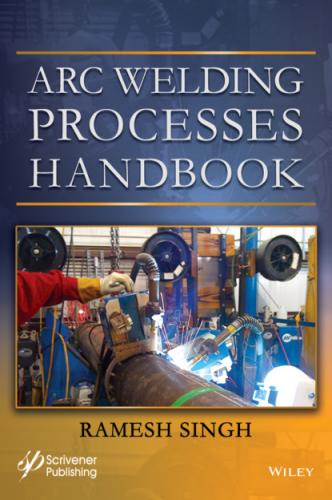Figure 3.7.1 The graph
Figure 3.7.2 Four AC wave forms
Figure 3.7.2.2 Effect of Independent AC amperage control on weld penetration and weld bead profile
Figure 3.7.2.3 Effect of variation in AC frequency on the weld profile and penetration
Figure 3.7.2.4 Provides an example of a weld done at 150 Hz and 40 Hz
Figure 3.7.2.5 Weld profile as a result of extended EN of the cycle
Figure 3.7.2.6 Weld profile as a result of reduced EN cycle
Figure 3.7.4.1 A schematic drawing of single-phase DC power source with SCR bridge control
Figure 3.7.6.1 Schematic diagram of a DC generator
Figure 3.7.6.2 DC excitation circuit
Figure 3.9.1 Gas flow meters (A) shows the tube type flow meter, and the bottom (B) has a gauge type flow meter both calibrated in L/min
Figure 3.10.1 A typical manual welding torch, note the water cooling, gas supply and tungsten electrode assembly
Figure 3.10.2 Various nozzles types and sizes
Figure 3.10.3 A gas lens, with mesh, and holding circlip
Figure 3.10.4 An assortment of manual welding GTAW torch components
Figure 3.11.1 Electrode tips
Figure 3.11.2.1 The tip angle 60°, note the depth of the deeper penetration and the shape and depth of the HAZ
Figure 3.11.2.2 The tip angle 30°, note the depth of the shallower penetration and the shape of the HAZ
Figure 3.11.2.3 The tip angle 15°, note the depth of the shallowest penetration and the shape of the HAZ
Figure 3.12.1 Five basic weld designs, (Courtesy of Indian Air force training manual “Basic Welding Technology”)
Figure 3.16.1 Copper and Aluminum welding leads: note the number of fine wires that compose a cable, and the rubber sheathing that covers them
Figure 3.16.2 Various types of cable connectors, and ground clamp. Pictures Curtsy of LENCO catalogue
Figure 3.25.9.3.1 Welder is tacking a pipe prior to welding
Figure 3.25.9.3.2 A nozzle is welded on a pipe header
Figure 3.25.10.2.1 Schaeffler diagram
Figure 3.25.10.2 DeLong diagram
Figure 4.3.1 Typical GMAW welding
Figure 4.4.1 A GMAW operator welding on an offshore pipeline
Figure 4.4.1.1 Short circuit transfer (arc-action and cycle)
Figure 4.4.1.2 Current voltage range for various transfer mode
Figure 4.11.1 Typical GMAW (MIG) welding set up with the external wire feed unit
Figure 4.12.1 A typical GMAW torch with trigger type on-off switch on the handle
Figure 4.12.2 Blow out of the GMAW torch that shows some of the components that make up a welding torch
Figure 4.12.3 The GMAW torch and the cable connector
Figure 4.12.1.4 Copper and aluminum welding leads: note the number of fine wires that compose a cable, and the rubber sheathing that covers them
Figure 4.13.8.1 (a) Contour of a weld bead in the flat position with the work horizontal; (b) welding slightly uphill; (c) welding slightly downhill
Figure 4.13.12.1 WRC diagram
Figure 5.3.1 FCAW-S self-shielding tubular wire process
Figure 5.3.2 FCAW-G, gas shielding solid wire process
Figure 5.4.1 Typical FCAW setup
Figure 5.5.1 FCAW electrode classification system
Figure 5.8.7.2.1 Shows the metal transfer through the arc with CO2 shielding on the left, and 75% Ar. + CO2 on the right
Figure 6.3.1 Schematic display of the SAW process
Figure 6.3.2 Shows the submerged arc welding of a plate
Figure 6.3.3 Shows the SAW of a pipe in a fabrication shop – note the arc and flux position as the pipe rotates
Figure 6.3.4 Shows the completed pipe weld
Figure 6.3.5 Higher deposition rate of SAW process
Figure 6.6.1 Showing SAW process in progress on a pipe weld
Figure 6.6.2 Shows the collected flus for cleaning and reusing
Figure 6.7.1 Multi-wire SAW system
Figure 6.7.3 Tandem head strip wire SAW process for cladding
Figure 7.1 Structure of the welding symbol
Figure 7.2 Welding symbol arrows
Figure 7.3 Welding symbol position of the arrows
Figure 7.4 Significance of the circle on the arrows
Figure 7.5 Symbols for type of welds
Figure 7.6 Symbol of a fillet weld
Figure 7.7 Shows the side of the metal where the fillet weld is required to be made
Figure 7.8 Graphic and as built depiction of welds – note the weld sizes shown in the symbol on left and its corresponding annotation on the actual weld
Figure 7.9 Shows the addition of the length of the weld to the symbol at the left, and what it means is shown in the as built figure on the right
Figure 7.10 Adding pitch of the weld
Figure 7.11 Symbols of various types of Groove Welds
Figure 7.12 Symbol of Sq. groove weld – note the annotation of root opening
Figure 7.13 Symbol and as built of V-groove welds, note how the root gap (opening) is shown
Figure 7.14 Shows the (1) depth of V groove on both sides of the weld, (2) shows the depth of the penetration desired of the weld
Figure 7.15 Shows the specific depth of the groove weld (effective throat) desired
Figure 7.16 Symbol of a bevel groove note which side of the plate is to be beveled and to what degree
Figure 7.17 Shows U-groove symbol
Figure 7.18 Shows the J-groove symbol and the weld. Note the indicated depth of the weld
Figure 7.19 Symbol of Flare-V groove weld and as built weld
Figure 7.20 Symbol of and as built flare bevel and the weld
Figure 7.21 Shows the melt-thru weld
Figure 7.22
